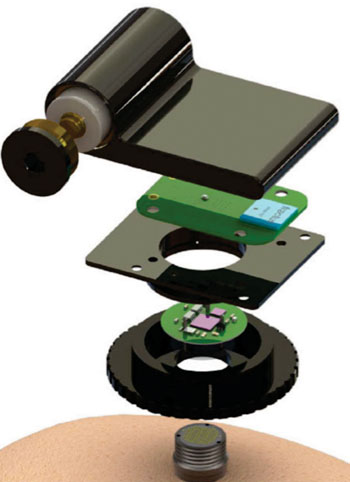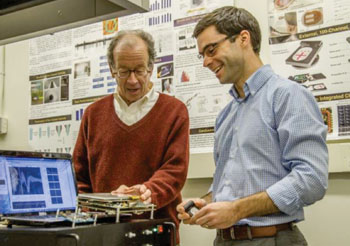Partnership to Launch Wireless Brain Research System
By LabMedica International staff writers
Posted on 08 Jan 2015
Neuroscience research is now going wireless with the use of a new neural activity monitoring system.Posted on 08 Jan 2015
Blackrock Microsystems, LLC (Salt Lake City, UT, USA) reported that it has established an agreement with Brown University (Providence, RI, USA) to license and market a wireless neural activity monitoring system that will free neuroscientists from the burdensome wires and cables that have hampered their research efforts for years.
The technology was described online December 4, 2014, in the journal Neuron. The wireless neurosensory, developed by the neuroengineering laboratory at Brown University, was found to substantially outperform all other wireless sensors currently on the market. Senior author Arto Nurmikko commented, “This device enables new types of neuroscience experiments with vast amounts of brain data wirelessly and continuously streamed from brain microcircuits.”
Blackrock first presented the system at the Society for Neuroscience’s annual meeting in Washington DC (USA), held in November 2014. The Blackrock system, which includes Brown’s technology, can transmit large amounts of data—via 96 channels at 48 Mbps—from a subject’s brain for up to 48 hours between rechargeable battery replacements. Furthermore, at only 43 g and 60 cubic centimeters, it is more compact than any other wireless brain technology.
Traditional wired neuroscience research systems restrict a person’s movement and make it tremendously hard for researchers to study sleep. Blackrock’s new wireless system eliminates such problems. “This wireless system is a major step forward in brain-interface technology,” said Prof. Florian Solzbacher, PhD, president of Blackrock Microsystems. “We’re working hard to make this technology smaller and longer-lasting. These systems can have every-day, practical uses for people, and we’re determined to make that a reality.”
Blackrock Microsystems is a world-leading provider of technology in the neuroscience, neural engineering, and neural prosthetics space. The company’s technology is focused on worldwide the latest advances in brain machine interfaces, implantable bionic technologies, and epilepsy diagnostics.
Related Links:
Blackrock Microsystems
Brown University















